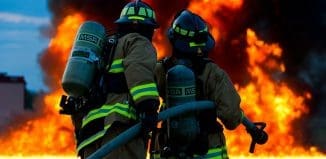The Struggle over the Iranian Nuclear Program
This post is also available in:  עברית (Hebrew)
עברית (Hebrew)

It is incumbent on Israel to use all the diplomatic and political tools at its disposal to halt the signing of an accord with Iran that leaves Teheran with the capability to produce nuclear weapons. We are currently at a decisive stage in the struggle over the fate of the Iranian nuclear program, with the center of attention being the negotiations over the future of the plan between the great powers, with the United States at the forefront, and Iran. The question currently being aired is whether Iran will be willing to accept a watered-down list of restrictions on its nuclear activity, in return for the incremental lifting of a range of sanctions currently in place against it.
At the heart of this question is the width of the proposed Iranian nuclear threshold, that is: Under the terms of the proposed agreement, how many months will it take for Iran to acquire sufficient quantities of weapons-grade enriched uranium for an initial nuclear explosive device, and then to weaponize it, should it choose to do so? Such a step would of course be in breach of Iran’s declarations and commitments, but these are in any case widely considered to be entirely unreliable and inconsequential.
A large number of parameters will determine the answer to this question, among them: the number of centrifuges that Iran will be able to maintain, their type, the connections between them and how they are operated; the level of enrichment to be allowed; the quantity of enriched material that Iran will possess at any given time, and what will be done with any enriched material beyond the permitted amount; the kinds of research and development to be conducted on uranium enrichment; the future of the secret Iranian facilities, in particular the underground enrichment facility at Qom; what will be done with the decommissioned centrifuges, and with the physical infrastructure on which they are constructed; the future of the components of the plutogenic track, in particular the reactor at Arak; how Iran is to report its past nuclear activity, with an emphasis on the possible military dimensions of this activity (PMDs); which limitations will be placed on Iran in terms of developing ballistic missiles; the length of time that the agreement will be valid, in terms of the restrictions it places on Iran; the mechanisms for inspection and supervision of the agreement’s implementation; the restrictions to be placed on Iran’s nuclear cooperation with other countries; and how the sanctions are to be lifted.
The way in which the parties involved relate to these parameters reflects both their own policies, and the way in which they understand the policies of the other parties to the process. I will describe the policies of the main parties below, foremost among them being the United States and Israel, and accordingly their attitudes toward the parameters underlying the debate. But first it is worth examining the framework within which the discussion of this important issue is being conducted. This framework comprises the current status of the Iranian nuclear program, and the history of the struggle over its future; the current status of the international and regional systems; and the worldviews of the relevant leaders who hold decision-making roles regarding the future of the program.
The current status of the Iranian nuclear program is the result of 27 years of Iranian investment on the one hand, and, on the other, efforts to halt it, mainly by Israel. There was a brief period between 2003 and 2005 when European pressure, backed by a US military threat, resulted in Iran first accelerating its program, and then agreeing to slow it down; and also a three-year period from 2012 onwards, of more serious international involvement in attempting to slow the pace of the program. Although this latter involvement was largely a case of too little, too late, it has led to the current situation in which the program is being examined.
The glass-half-full for Iran is that, over these decades, its scientists have successfully overcome a raft of technical hurdles, often with the help of foreign experts, and have accumulated essential knowledge in missile technology and nuclear enrichment, as well as apparently acquiring a significant proportion of the technologies necessary for creating a warhead and fitting it to the Shahab 3 missile. Throughout this period, Iran’s leaders have acted to take advantage of Western laxity and to create a previously unthinkable reality in which the international community, and in particular the United States, is prepared to accept the existence of an active Iranian nuclear program, one that supports a leap to nuclear weaponization, and thus in effect to accept – and even grant formal legitimacy to – the reality of Iran as a nuclear threshold state.
In the “Joint Program of Action” (JPOA) from November 2013, agreement was reached on the principle that a final agreement about the Iranian nuclear program would allow it to enrich uranium in line with its practical civilian needs, despite the fact that it is clear that there is no such civilian need; and the Iranians would be allowed to continue part of their R&D activities in enrichment and to operate the Qom facility; while at the same time no agreement was reached regarding Iran’s ballistic missile array. All of the above stands in complete opposition to the decisions of the UN Security Council, which are still in force.
Register to iHLS Israel Homeland Security
Thus Iran: continues to develop its arsenal of missiles; avoids providing information about its weapons activity and achievements; continues to enrich uranium using around 9,000 centrifuges of a relatively low-yield model, including at the Qom facility; maintains around 10,000 additional centrifuges that have been installed but are not yet active, most of them of the same type, but some more advanced; continues to develop different types of more advanced centrifuges, which it will be able to make operational should it need to do so; and continues to hold some 7.5 tons of enriched uranium to a level of 3.5% (which represents around half the investment in enrichment required for military-grade material). Once brought up to a 90% enrichment level, this would be sufficient fissionable material to make four or five atomic bombs.
Indeed, two years ago the situation was even more serious in certain respects. At that time Iran had accumulated close to 200 kg of enriched uranium at a level of 20% (representing around 75% of the effort required to achieve military quality), but its activity was then considered illegal, whereas now it is carried out with the agreement of the international community. The practical upshot of this situation is that Iran is today only several months away from producing sufficient fissionable material for the creation of its first nuclear warhead device, and maintains the capabilities required to develop nuclear weapons.
The glass-half-empty for Iran is that it suffers, although increasingly less so, from the effects of the economic sanctions placed upon it by the West.
It is possible to say that the fact that Iran has not yet developed nuclear weapons, in spite of the 27 years in which it has been trying to do so, is due in no small part to Israel’s efforts, which will be discussed in more detail below. Thus the claims made that Iran’s success in proceeding towards the attainment of nuclear weapons represent an Israeli failure, are themselves worthy of ridicule. Without Israel’s actions, Iran would have obtained nuclear weapons several years ago, and moreover, it is thanks to Israel’s actions that Iran is unlikely to obtain nuclear weapons for many years to come, even if an agreement is reached that does not meet Israeli expectations.
The regional and international picture has undergone many far-reaching changes since Iran began its nuclear program. Despite the importance of the effort to block this plan for all the main players in the international arena, their general agreement to work together against the Iranian nuclear threat, and the fact that this agreement was reached in spite of the differences between the six countries party to it, the powers never viewed the thwarting of the Iranian plan to be a goal of supreme importance, trumping other international and regional considerations, and thus refrained from defining as a goal the removal of the dangerous regime in Tehran. This is in spite of the regime’s extremism, its repression of the Iranian people, its deep involvement in terror and agitation, and its commitment to the change of the regional and world order and to the destruction of the State of Israel.
The West does attribute such supreme importance to other interests, such as the war on terror, relations with Russia, safeguarding the flow of oil, ensuring regional stability at minimal cost, and others. Against the backdrop of regional instability and the war against the “Islamic State,” the significant differences between the international powers and the pragmatic regional powers have only deepened, as regards Iran’s nuclear aspirations and their connection to other threats in the region. While the pragmatic powers in the region view Iran as a central part of the revolutionary Islamist camp, and see its nuclear program as a springboard for it to increase its regional hegemony, the international powers, including the United States, see Iran as a potential partner in the battle with Islamic ultra-extremism and in the struggle to promote regional stability and economic interests.
The third component of the framework in which the current campaign is being conducted is, as mentioned, the worldviews of the decision makers. Western leaders, with Obama at their forefront, believe in the almost exclusive use of dialogue as a means to address disagreement. They believe that Muslim perspectives in general, and Iranian perspectives in particular, of the West as a historical oppressor that has wrought great harm to the region, contain an element of truth that needs to be acknowledged. They are convinced that the burden of proof as to the good intentions of the parties to the current negotiations falls first and foremost on the West, and in accordance with their liberal outlook, believe that all people share essentially similar and equally worthy values and aspirations.
On the other hand, the leaders of Iran, who are driven by a sense of mission that is both Islamic and revolutionary Iranian-nationalist, believe that it is their duty to bring about a wholesale change in the world order, using a combination of cunning, force, and daring, and making the most of the freedom of action afforded to them by the reined-in West. They are convinced that the West has no values whatsoever, and is unworthy of its current preferred status in international affairs.
As a result, the talks between the powers and Iran are not conducted in a manner reflecting the true balance of power between them, but rather the exact opposite. It is Iran that dictates the agenda, while America and the West attempt to placate the other side, and are hesitant about bringing up issues that they fear Iran will refuse to discuss, lest they be accused by Iran of lacking serious intent in the negotiations.
It is within the problematic framework described above that the struggle over an agreement is currently being conducted. It is sufficient to examine the development of the American position on the issue of the number of centrifuges that Iran will be allowed to keep operational, in order to see the extent to which Washington has agreed to be flexible in its demands, without receiving anything in return from Teheran.
Written by: Brig. Gen. (res.) Yossi Kuperwasser, former chief of the research division in IDF Military Intelligence, and until recently, director general of the Ministry of Strategic Affairs. This text is based on the lecture that General Kuperwasser delivered on February 15, 2015 at the Begin-Sadat Center for Strategic Studies (BESA).





























